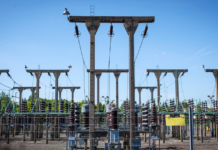In the past one year, Chenab Limited has seen a revival. The former textile giant has seen its fortunes on the Pakistan Stock Exchange (PSX) rising. In August 2024, their share price was hovering at Rs 3.5 per share. By the start of August this year, their share price is somewhere around Rs 23.1.
What is behind the increase? Chenab was one of the larger textile companies that were hit badly when the 2008 power crisis hit the country’s largest export oriented sector. It has struggled to keep up in the near two decades since. Chenab borrowed heavily to keep going but the weight of the debt was drowning them. In 2022 there seemed to be a glimmer of hope. A lending consortium led by HBL hashed out a debt restructuring deal with Chenab and it seemed there might still be hope for them.
But is that enough reason to merit the turnaround in investor confidence? The stock price increase indicates that the market definitely seems to think so. Looking a little deeper, however, the company’s financials reveal a combative picture. Even though revenues have increased in recent times, losses still persist. Not much has changed at the company in terms of its operating performance. In fact, recent financial results show that the company is going to close out the year with higher losses compared to last year.
With negative equity, it is obvious that shareholders’ have little to no wealth they can attach to the company. The strongest possibility is that the increase in the share price can be attributed to the fact that the asset base is being revised or a sale is being contemplated outright. But how did a company that was one of the leading exporters get to this point? The content in this publication is expensive to produce. But unlike other journalistic outfits, business publications have to cover the very organizations that directly give them advertisements. Hence, this large source of revenue, which is the lifeblood of other media houses, is severely compromised on account of Profit’s no-compromise policy when it comes to our reporting. No wonder, Profit has lost multiple ad deals, worth tens of millions of rupees, due to stories that held big businesses to account. Hence, for our work to continue unfettered, it must be supported by discerning readers who know the value of quality business journalism, not just for the economy but for the society as a whole.To read the full article, subscribe and support independent business journalism in Pakistan

























